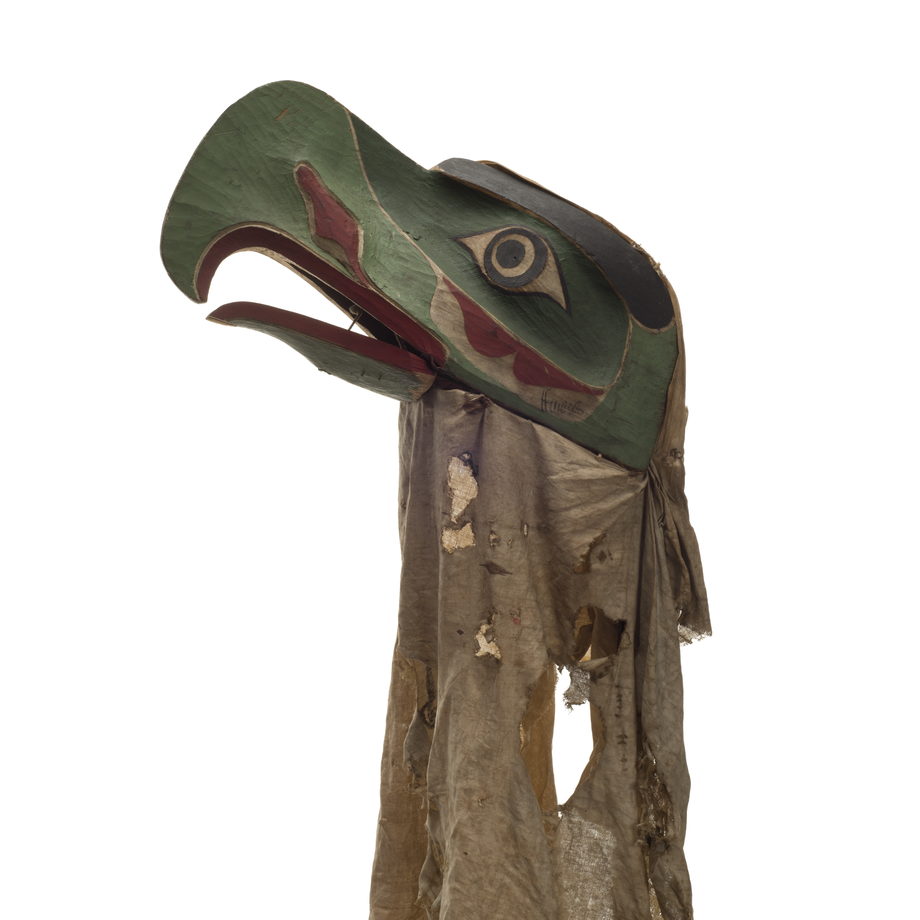Kulus
Supernatural down-covered bird
In many legends, Kulus is referred to as the younger brother or sister of the Thunderbird. Kulus does not have feathers and is noted for its very thick coat of white down; it is said to be so thick that the bird has the tendency to perspire, and is happy to remove his covering and become human for a while. This refers to the ability, like Thunderbird, to transform and become human. In many origin stories, a Kulus flew down from heaven and shed his costume to become the founding ancestor of the tribe or clan.
Catalogue Information
Materials
Wood, Cedar; Fibre, Flax; Paint; Fibre, Cotton; Metal, Iron
Dimensions
45.0 cm
Accession Number
80.01.154
Physical Description
Bird mask carved from red cedar and painted in commercial paints in light green, ocean green, red, white and black. The mask is crudely carved and seems to have been made in haste, possibly to meet a deadline or a dance that was close at hand. The lower jaw is hinged with leather patches to allow the mouth to open and close when manipulated by the head movements of the dancer. The mask is quite large and the back of the mask would cover the dancer's entire face. This would also allow for a whistle to be carried in the dancer's mouth to bellow out the magical sound of the Kulus, which is also often referred to as Galit´sadza'yi "Screecher of Heaven". Kulus is a supernatural white down-covered bird with a costume of body plumage that is so thick that ancestors who appeared in this supernatural form often shed their feathered clothing to avoid perspiration. Only a fine white cotton cloth remains nailed around the rim of the lower jaw and on top of the bird's head. This cloth would have concealed the dancer's face and it is probable that this cloth was a quick replacement for a hide that included white feathers or some material that had white feathers sewn to it. There are cotton twine straps secured to the inside of the mask to allow for it to be tied to the dancer's head and shoulders. Green, red, white, black.
